Belisarius › Beowulf › Ancient Egyptian Mortuary Rituals » Origins and History
Articles and Definitions › Contents
- Belisarius › Who Was
- Beowulf › Who Was
- Ancient Egyptian Mortuary Rituals › Origins
Ancient civilizations › Historical places, and their characters
Belisarius › Who Was
Definition and Origins

Flavius Belisarius (505-565 CE) was born in Illyria (the western part of the Balkan Peninsula) to poor parents and rose to become one of the greatest generals, if not the greatest, of the Byzantine Empire. Belisarius is listed among the notable candidates for the title of `Last of the Romans' by which is meant the last individual who most perfectly embodies the values of the Roman Empire at its best. He seemed to understand completely when it was necessary to strike and when it was more prudent to heal. Belisarius served under the Byzantine Emperor Justinian I and, according to the historian Durant
no general since Caesar ever won so many victories with such limited resources of men and funds; few ever surpassed him in strategy or tactics, in popularity with his men and mercy to his foes; perhaps it merits note that the greatest generals – Alexander, Caesar, Belisarius, Saladin, Napoleon – found clemency a mighty engine of war.
He first enlisted in the army under the Byzantine Emperor Justin I and, upon that emperor's death, his successor, Justinian I, awarded Belisarius full command of the army. He put down the Nika uprising in Constantinople in 532 CE, the result of resentment against Justinian I, slaughtering between twenty and thirty thousand people. The rebellion crushed, Justinian then sent him against Persia in 533 CE. A series of brilliant victories followed as Belisarius deployed his forces and maneuvered his strategies in ways unfamiliar to the Persian forces and so ably defeated them.
IN 535 CE BELISARIUS WAS SENT AGAINST THE OSTROGOTHS IN ITALY AND, AGAIN, WON A NUMBER OF STUNNING VICTORIES.
Justinian recalled Belisarius, made peace with the Persians, and then sent Belisarius to win back African provinces to the empire. The Vandals had conquered the African provinces of the former Roman Empire, but in time the populace had reverted back to Roman ways. Still, the lands were not governed by the empire and, therefore, were not generating revenue for Justinian. In 533 CE, Belisarius embarked with 5,000 cavalry, decimated the Vandal power in only a few months and restored the provinces to Byzantine rule. Carthage, and the other former African provinces of imperial Rome, would remain under Byzantine control until the Muslim conquest.
In 535 CE Belisarius was sent against the Ostrogoths in Italy and, again, won a number of stunning victories. He took Sicilyfirst in 535 CE and then Naples and Rome in 536 CE and finally in 539 CE (540 CE according to some sources) Ravenna, securing the King Witigis as prisoner. Justinian then offered the Goths his terms which, in Belisarius' view, were too generous: they could keep an independent kingdom and, for the trouble they had caused, would only have to surrender half of their treasury to Justinian.
The Goths trusted neither Justinian nor his terms; they did, however, trust Belisarius who had behaved honorably toward the conquered throughout the war. They answered that they would agree to the terms of surrender if Belisarius endorsed the treaty. Belisarius could not do so, however, as he believed the Goths were getting off too lightly. A faction of the Ostrogothnobility suggested a way around this impasse by making Belisarius himself their new king. Belisarius pretended to accept their proposal but, loyal to Justinian and knowing himself an abler soldier than statesman, went along with all their preparations to crown him at Ravenna and then had the ring-leaders of the plot arrested and claimed all of the Ostrogoth Empire, and all of the treasury, in Justinian's name.
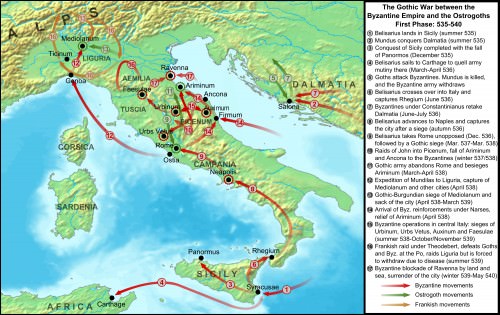
Map of the Gothic War
Justinian grew suspicious because Belisarius was so incredibly popular among his men as well as among those conquered.The emperor recalled Belisarius to Constantinople and replaced him in Italy with Byzantine officials. Durant cites the ancient writer and contemporary Procopius in reporting how the Byzantines
took delight in watching Belisarius as he came forth from his home each day… For his progress resembled a crowded festival procession, since he was always escorted by a large number of Vandals, Goths, and Moors.Furthermore, he had a fine figure, and was tall and remarkably handsome. But his conduct was so meek, and his manners so affable, that he seemed like a very poor man, and one of no repute.
Belisarius was again sent against the Persians but, by 545 CE, was back in Italy to quell another uprising. The Byzantine officials, whom Justinian had given governorship to, had so misused their powers that a Gothic uprising, led by a man named Baduila (known better by his nom de guerre, Totila ) had thrown the region into chaos. Belisarius made his way through enemy lines to Rome, almost alone, and entered the city undetected. Belisarius re-took the city and drove Totila and his forces out. Justinian, again fearing that Belisarius might prove too popular and, therefore, a threat, recalled him and sent the general Narses to replace him in Italy. Narses succeeded in killing Totila, crushing the insurrection, and driving the Goths from Italy.
Despite Justinian's mistrust, Belisarius again accepted the command of troops at his order and crushed the Bulgars when they attempted to invade the Byzantine Empire in 559 CE. He once again ably drove the enemy back across the border and secured the boundaries of the empire. Even after all his service to Justinian, Belisarius was accused of corruption (generally understood today as trumped up charges) and sent to prison in 562 CE.
Justinian pardoned him, however, and restored him to his previous standing and honour at the Byzantine court. A myth later grew up around this event in which Justinian had Belisarius blinded and the great general became a beggar on the streets of Constantinople. This myth, however, has no basis in historical fact even though many works of art, such as Jacque-Louis David's painting Belisarius, have depicted it as so. Belisarius died in 565 CE, within only a few weeks of Justinian, in Constantinople.
Beowulf › Who Was
Definition and Origins
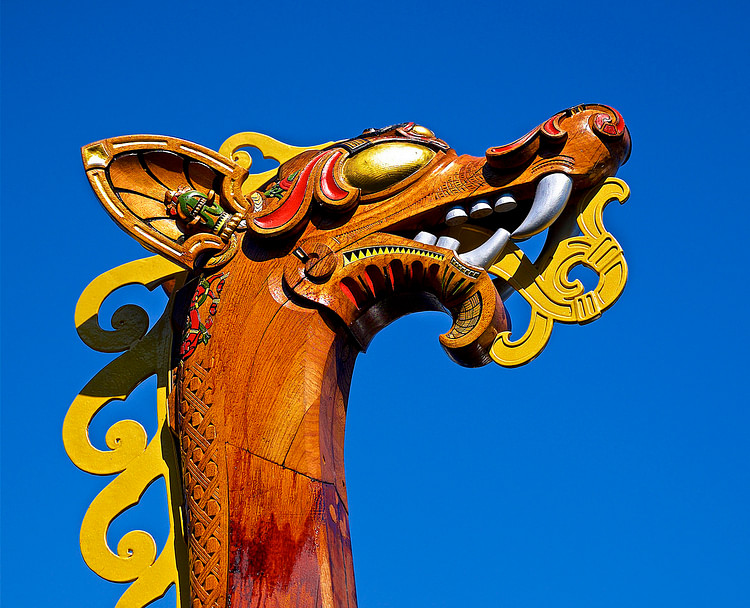
Beowulf is an epic poem composed in Old English consisting of 3,182 lines. It is written in the alliterative verse style, which is common for Old English poetry as well as works written in languages such as Old High German, Old Saxon, and Old Norse.Beowulf is considered one of the oldest surviving poems in the English language. The author of the poem is unknown and is generally referred to simply as the “ Beowulf Poet.” The date of the poem's composition is also unknown. Arguments have been made for an origin as early as the 7th century CE. The poem concerns the legendary figure Beowulf, a hero of the Geats who were a North Germanic people inhabiting modern-day Gotaland in southern Sweden. Beowulf fights a series of monsters and also rules as King of the Geats for approximately 50 years.
BACKGROUND & HISTORICITY
The poem takes place in different parts of Scandinavia over the course of the 6th century CE. While the poem's protagonist and his deeds are legendary, historical figures and events are also described. Several characters mentioned in the poem also appear in other Old English or Scandinavian sources. For example, the raid by the Geatish king Hygelac into Frisia is mentioned by the 6th century CE chronicler Gregory of Tours, who gives Hygelac's name as Chlochilaicus.
DESCRIPTIONS IN OTHER SOURCES HAVE BEEN USED TO DATE THE EVENTS OF BEOWULF TO THE 6TH CENTURY CE.
Many other figures, events, and places have parallels in Scandinavian sources. These include semi-legendary clans such as the Scyldings (Old Norse Skjoldungar ) of Denmark and the Scylfings (also Ynglings or Old Norse Skilfingar ) of Sweden, as well as several of their respective members. Characters such as Hrothgar, Eadgils, Hrothulf (Hrolf Kraki), and Othhere are all mentioned in other Scandinavian poetry and legend. Similarly, events such as the Battle of Finnsburg, the Battle on the Ice of Lake Vanern, and the aforementioned raid on Frisia by Hygelac are mentioned in other sources. Descriptions of these events in other sources have been used to date the events of the poem to the 6th century CE. Archaeological digs have also validated the descriptions of the burial sites of some of these semi-historical figures. Writers such as Snorri Sturluson (1179 CE - 1241 CE) described the locations of the burial mounds of kings such as Othhere and Eadgils. Several of these mounds have been excavated, revealing rich finds dating from the 6th century CE and seemingly validating these references in Beowulf and Norse Sagas.
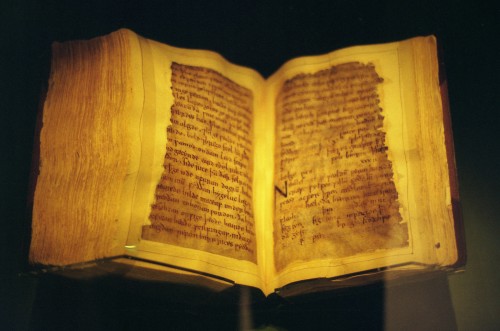
Beowulf Manuscript
The date of the poem's composition is unknown and is the subject of much debate. The surviving manuscript probably dates from either the late 10th century CE or the early 11th century CE. However, the poem itself may be much older. Arguments have been made for as early as the 7th century CE and as late as the 11th century CE. The poem was composed in England, though exactly where is uncertain. Some scholars have taken the poem's Scandinavian setting as evidence for an origin in the kingdom of East Anglia. The East Anglian royal house, the Wuffingas, seem to have had close ties to Sweden. This is evidenced by the Sutton Hoo ship burial. Arguments have also been made for an origin in the Kingdom of Wessex in the 9th century CE and for an origin in the early 11th century CE court of Cnut, the Danish king who ruled Denmark, Norway, and England.
PLOT SUMMARY
Beowulf begins with a description of the life of Scyld Scefing (Old Norse Skjold ), the legendary ancestor of the Scyldings or Danish royal family. The narrator then lists several descendants of Scyld before coming to Hrothgar, who rules from the hall of Heorot. Heorot may be identical to a 6th century CE hall excavated near Lejre in 2004-2005 CE. Beowulf and his thegns(retainers or soldiers) arrive at Heorot to assist Hrothgar against the monster Grendel. Grendel is described as a descendant of the biblical Cain and is an outsider among men. The narrator explains that the sounds of celebration and joy coming from Heorot actually agonize Grendel. Grendel begins attacking Heorot on a nightly basis, killing and devouring Hrothgar's warriors.Hrothgar and his people are depicted as helpless against the monster's attacks and Grendel ravages Hrothgar's hall for 12 years before Beowulf's arrival.
In off the moors, down through the mist bands God-cursed Grendel came greedily loping.The bane of the race of men roamed forth, hunting for prey in the high hall.( Beowulf, 710-13)
Beowulf hears about the plight of Hrothgar while at home in Geatland. He receives the permission of the Geatish king to travel with his warriors to Denmark and fight Grendel. Beowulf and his followers are welcomed by Hrothgar and his wife Wealtheow.Unferth, one of Hrothgar's warriors, is skeptical about Beowulf's abilities and the two fling insults at each other. On their first night in Heorot, Beowulf pretends to sleep while awaiting Grendel's inevitable arrival. When Grendel appears, Beowulf attacks him and they begin to grapple with each other but the swords of Beowulf's warriors are unable to pierce Grendel's skin. Finally, Beowulf is able to rip Grendel's right arm off and the monster flees the hall. The arm is hung up as a trophy and Beowulf's victory is celebrated.
Hanging high from the rafters where Beowulf had hung it, was the monster's arm, claw, and shoulder and all. ( Beowulf, 833-836)
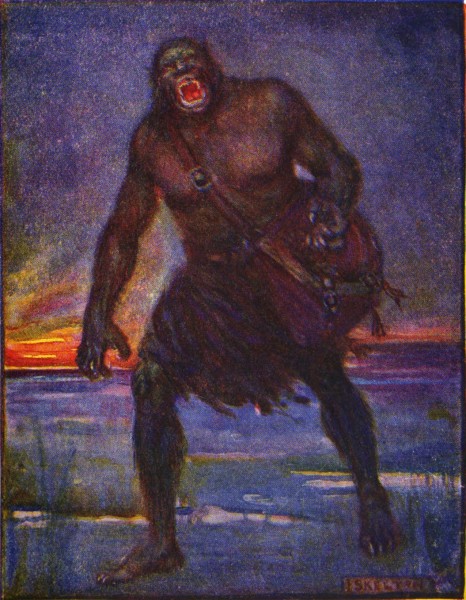
Grendel from the Beowulf
The following night, Heorot is again attacked. This time, it is Grendel's mother who has come, infuriated by the attack on her son. Grendel's mother drags Aeschere, Hrothgar's most trusted warrior, out of the hall and kills him. Aeschere's head is later found as Beowulf and the others are tracking Grendel's mother. Beowulf, Hrothgar, and the other warriors track Grendel's mother to her lair under a lake. The warrior Unferth presents Beowulf with his sword Hrunting and Beowulf makes preparations with Hrothgar should he be killed in the coming fight. Beowulf then plunges into the water and discovers a cave where Grendel and his mother have been living.
Beowulf: It is better for us all to avenge our friends, not mourn them forever. Each of us will come to the end of this life on earth. He who can earn it should fight for the glory of his name. Fame after death is the noblest of goals. Arise, guardian of this kingdom, let us go, as quickly as we can and have a look at this lady monster. ( Beowulf, 1384-1391)
In the cave, Beowulf finds Grendel's body as well as the bodies of the men whom he and his mother have killed. Beowulf fights with Grendel's mother, but Unferth's sword cannot pierce her skin. In turn, Beowulf is protected against her attacks by his armor. Beowulf eventually finds another, magic sword at the bottom of the lake and uses it to behead Grendel's mother. The blade of his new sword is dissolved by the apparently toxic blood of the two monsters. He then takes their heads back to Hrothgar. In reward, Hrothgar showers Beowulf in gifts, including his ancestral sword Naegling. What follows is a lengthy speech by Hrothgar, urging Beowulf to remain humble and to be generous to his thegns. In essence, Hrothgar is espousing the proper behavior of a successful king and warlord. This would have reflected the values of the Anglo-Saxon aristocracy as well as their counterparts in the other early Germanic kingdoms.
A BRILLIANT LIGHT BURNED ALL AROUND HIM, THE LAKE ITSELF LIKE A FIERY FLAME...HE SWUNG HIS SWORD...STRAIGHT AT HER HEAD. THE IRON SANG ITS FIERCE SONG. ( BEOWULF, 1512-1521)
Following this victory, Beowulf and his followers return to Geatland, where he becomes King of the Geats and rules for roughly 50 years. At the end of this period, an elderly Beowulf is forced to confront a rampaging dragon. The narrator explains that a slave stole a cup from the dragon's hoard at a place called Earnanaes. This prompts the furious beast to leave its lair and attack the countryside. The image of the dragon hoarding its treasure can be contrasted with generous kings and lords who properly reward their warriors and thegns for faithful military service. Beowulf and his soldiers arrive to fight the dragon but Beowulf demands to fight it alone and proceeds to battle with the monster. The dragon overpowers Beowulf and his men flee in terror. Only Wiglaf, described as a kinsman of Beowulf, remains to aid Beowulf. Together, Wiglaf and Beowulf kill the dragon, but Beowulf soon dies of his wounds.
Wiglaf: By almighty God, I'd rather burn than see flames swirling around my lord...I swear that nothing he ever did deserved an end like this, dying miserably and alone, butchered by this savage beast. ( Beowulf, 2650-2652, 2656-2659)
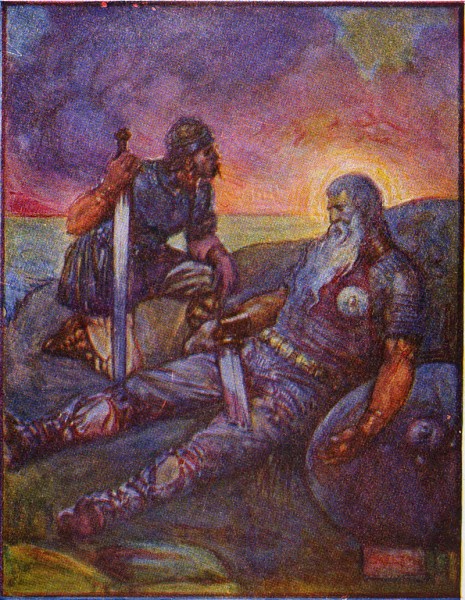
Wiglaf & Beowulf
Wiglaf retrieves the dragon's treasure at Beowulf's request and condemns his other followers for fleeing. Wiglaf is described as a cousin to Beowulf and as the last of the Waegmundings, who were the tribe of Beowulf's father. Beowulf himself is burned on a funeral pyre and then buried in a barrow overlooking the sea. Beowulf's people mourn his loss and are thrown into a panic for fear that they will no longer be adequately protected against attacks from neighboring peoples. No doubt this reflects a very real concern for people living in Anglo-Saxon England at the time of the poem's transcription.
For ten long days they made his monument, sealed his ashes in walls as straight and high as wise and willing hands could raise them...And the treasures they'd taken were left there too...Ground back in the earth. ( Beowulf, 3159-3163, 3165-3167)
THEMES
While the poem has a Christian veneer, the world of Beowulf and his contemporaries is decidedly pagan. The events of the poem take place long before the conversion of Scandinavia. The story takes place within the milieu of a decidedly Pre-Christian, Germanic warrior culture. Lords like Hrothgar and Beowulf hold lavish feasts, lead their respective warbands into battle, and reward their followers with treasure and gifts. These were the values of the ancient peoples of Scandinavia described in the poem, but they were also the values of the Anglo-Saxon nobility long after the arrival of Christianity.
Ancient Egyptian Mortuary Rituals › Origins
Ancient Civilizations
Ever since European archaeologists began excavating in Egypt in the 18th and 19th centuries CE, the ancient culture has been largely associated with death. Even into the mid-20th century CE reputable scholars were still writing on the death-obsessed Egyptians whose lives were lacking in play and without joy. Mummies in dark, labyrinthine tombs, strange rituals performed by dour priests, and the pyramid tombs of the kings remain the most prominent images of ancient Egypt in many people's minds even in the present day, and an array of over 2,000 deities - many of them uniquely associated with the afterlife - simply seems to add to the established vision of the ancient Egyptians as obsessed with death. Actually, though, they were fully engaged in life, so much so that their afterlife was considered an eternal continuation of their time on earth.
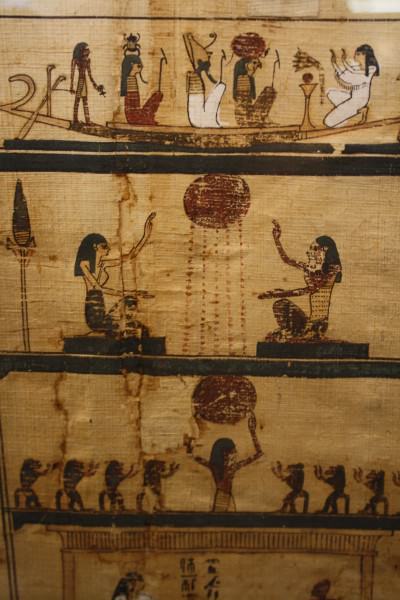
Book of the Dead of Tayesnakht
When someone died in ancient Egypt the funeral was a public event which allowed the living to mourn the passing of a member of the community and enabled the deceased to move on from the earthly plane to the eternal. Although there were outpourings of grief and deep mourning over the loss of someone they loved, they did not believe the dead person had ceased to exist; they had merely left the earth for another realm.
In order to make sure they reached their destination safely, the Egyptians developed elaborate mortuary rituals to preserve the body, free the soul, and send it on its way. These rituals encouraged the healthy expression of grief among the living but concluded with a feast celebrating the life of the deceased and his or her departure, emphasizing how death was not the end but only a continuation. Egyptologist Helen Strudwick notes, "for the life-loving Egyptians, the guarantee of continuing life in the netherworld was immensely important" (190). The mortuary rituals provided the people with just that sort of guarantee.
EARLY RITUALS & BURIAL
The earliest burials in ancient Egypt were simple graves in which the deceased was placed, on the left side, accompanied by some grave goods. It is clear there was already a belief in some kind of afterlife prior to c. 3500 BCE when mummification began to be practiced but no written record of what form this belief took. Simple graves in the Predynastic Period in Egypt (c. 6000 - c. 3150 BCE) evolved into the mastaba tombs of the Early Dynastic Period (c. 3150 - c. 2613 BCE) which then became the grand pyramids of the Old Kingdom (c. 2613-2181 BCE). All of these periods believed in an afterlife and engaged in mortuary rituals, but those of the Old Kingdom are the best known from images on tombs.
ALTHOUGH IT IS USUALLY THOUGHT THAT EVERYONE IN EGYPT WAS MUMMIFIED AFTER THEIR DEATH, THE PRACTICE WAS EXPENSIVE & ONLY THE UPPER CLASS & NOBILITY COULD AFFORD IT.
By the time of the Old Kingdom of Egypt, the culture had a clear understanding of how the universe worked and humanity's place in it. The gods had created the world and the people in it through the agency of magic ( heka ) and sustained it through magic as well. All the world was imbued with mystical life generated by the gods who would welcome the soul when it finally left the earth for the afterlife. In order for the soul to make this journey, the body it left behind needed to be carefully preserved, and this is why mummification became such an integral part of the mortuary rituals. Although it is usually thought that everyone in Egypt was mummified after their death, the practice was expensive, and usually only the upper class and nobility could afford it.
In the Old Kingdom the kings were buried in their pyramid tombs, but from the First Intermediate Period of Egypt (2181-2040 BCE) onwards, kings and nobles favored tombs cut into rock face or into the earth. By the time of the New Kingdom (c. 1570-1069 BCE) the tombs and the rituals leading to burial had reached their highest state of development. There were three methods of embalming/funerary ritual available: the most expensive and elaborate, a second, cheaper option which still allowed for much of the first, and a third which was even cheaper and afforded little of the attention to detail of the first. The following rituals and embalming methods described are those of the first, most elaborate option, which was performed for royalty and the specific rituals are those observed in the New Kingdom of Egypt.
THE PREPARATIONS
After death, the body was brought to the embalmers where the priests washed and purified it. The mortuary priest then removed those organs which would decay most quickly and destroy the body. In early mummification, the organs of the abdomen and the brain were placed in canopic jars which were thought to be watched over by the guardian gods known as The Four Sons of Horus. In later times the organs were taken out, treated, wrapped, and placed back into the body, but canopic jars were still placed in tombs, and The Four Sons of Horus were still thought to keep watch over the organs.

Canopic Jars of Neskhons
The embalmers removed the organs from the abdomen through a long incision cut into the left side; for the brain, they would insert a hooked surgical tool up through the dead person's nose and pull the brain out in pieces. There is also evidence of embalmers breaking the nose to enlarge the space to get the brain out more easily. Breaking the nose was not the preferred method, though, because it could disfigure the face of the deceased and the primary goal of mummification was to keep the body intact and preserved as life-like as possible. The removal of the organs and brain was all about drying out the body - the only organ they left in place was the heart because that was thought to be the seat of the person's identity. This was all done because the soul needed to be freed from the body to continue on its eternal journey into the afterlife and, to do so, it needed to have an intact 'house' to leave behind and also one it would recognize if it wished to return to visit.
After the removal of the organs, the body was soaked in natron for 70 days and then washed and purified again. It was then carefully wrapped in linen; a process which could take up to two weeks. Egyptologist Margaret Bunson explains:
This was an important aspect of the mortuary process, accompanied by incantations, hymns, and ritual ceremonies. In some instances the linens taken from shrines and temples were provided to the wealthy or aristocratic deceased in the belief that such materials had special graces and magical powers. An individual mummy would require approximately 445 square yards of material. Throughout the wrappings semiprecious stones and amulets were placed in strategic positions, each one guaranteed to protect a certain region of the human anatomy in the afterlife. (176)
Among the most important of these amulets was the one which was placed over the heart. This was done to prevent the heart from bearing witness against the deceased when the moment of judgment came. Since the heart was the seat of individual character, and since it was obvious that people often made statements they later regretted, it was considered important to have a charm to prevent that possibility.
THE FUNERAL PROCESSION & SERVICE
The embalmers would then return the mummy to the family who would have had a coffin or sarcophagus made. The corpse would not be placed in the coffin yet, however, but would be laid on a bier and then moved toward a waiting boat on the NileRiver. This was the beginning of the funeral service which started in the early morning, usually departing either from a templeof the king or the embalmer's center. The servants and poorer relations of the deceased were at the front of the procession carrying flowers and food offerings. They were followed by others carrying grave goods such as clothing and shabti dolls, favorite possessions of the deceased, and other objects which would be necessary in the afterlife.
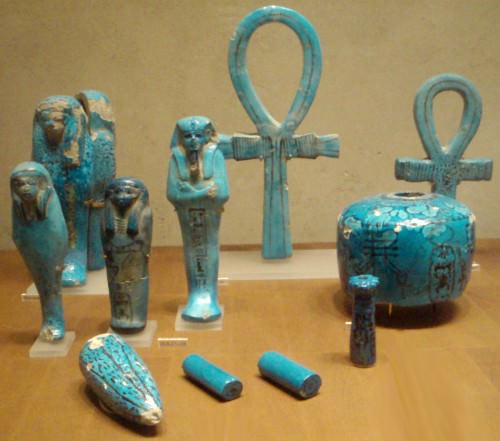
Objects from Tomb of Thutmose IV
Directly in front of the corpse would be professional mourners, women known as the Kites of Nephthys, whose purpose was to encourage others to express their grief. The kites would wail loudly, beat their breasts, strike their heads on the ground, and scream in pain. These women were dressed in the color of mourning and sorrow, a blue-gray, and covered their faces and hair with dust and earth. This was a paid position, and the wealthier the deceased, the more kites would be present in the procession. A scene from the tomb of the pharaoh Horemheb (1320-1292 BCE) of the New Kingdom vividly depicts the Kites of Nephthys at work as they wail and fling themselves to the ground.
In the Early Dynastic Period in Egypt, the servants would have been killed upon reaching the tomb so that they could continue to serve the deceased in the afterlife. By the time of the New Kingdom, this practice had long been abandoned and an effigy now took the place of the servants known as a tekenu. Like the shabti dolls, which one would magically animate in the afterlife to perform work, the tekenu would later come to life, in the same way, to serve the soul in paradise.
The corpse and the tekenu were followed by priests, and when they reached the eastern bank of the Nile, the tekenu and the oxen who had pulled the corpse were ritually sacrificed and burned. The corpse was then placed on a mortuary boat along with two women who symbolized the goddesses Isis and Nephthys. This was in reference to the Osiris myth in which Osiris is killed by his brother Set and returned to life by his sister-wife Isis and her sister Nephthys. In life, the king was associated with the son of Osiris and Isis, Horus, but in death, with the Lord of the Dead, Osiris. The women would address the dead king as the goddesses speaking to Osiris.
The boat sailed from the east side (representing life) to the west (the land of the dead) where it docked and the body was then moved to another bier and transported to its tomb. A priest would have already arranged to have the coffin or sarcophagus set up at the entrance of the tomb, and at this point, the corpse was placed inside of it. The priest would then perform the Opening of the Mouth Ceremony during which he would touch the corpse at various places on the body in order to restore the senses so the deceased could again see, hear, smell, taste, and talk.
During this ceremony, the two women representing Isis and Nephthys would recite The Lamentations of Isis and Nephthys, the call-and-response incantation which re-created the moment when Osiris had been brought back to life by the sisters. The lid was then fastened on the coffin and it was carried into the tomb. The tomb would have the deceased's name written in it, statues and pictures of him or her in life, and inscriptions on the wall ( Pyramid Texts ) telling the story of their life and providing instructions for the afterlife. Prayers would be made for the soul of the deceased and grave goods would be arranged around the coffin; after this, the tomb would be sealed.
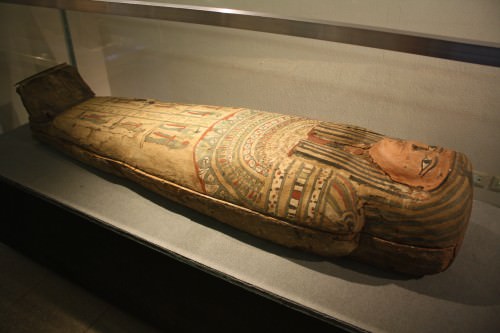
Egpytian Sarcophagus
The family was expected to provide for the continued existence of the departed by bringing them food and drink offerings and remembering their name. If a family found this too burdensome, they hired a priest (known as a Ka -Servant) to perform the duties and rituals. Lists of food and drink to be brought were inscribed on the tomb (Offering Lists) as well as an autobiography of the departed so they would be remembered. The soul would continue to exist peacefully in the next life (following justification) as long as these offerings were made.
The priests, family, and guests would then sit down for a feast to celebrate the life of the departed and his forward journey to paradise. This celebration took place outside of the tomb under a tent erected for the purpose. Food, beer, and wine would have been brought earlier and was now served as an elaborate picnic banquet. The deceased would be honored with the kind of festival he or she would have known and enjoyed in life. When the party concluded, the guests would return to their homes and go on with life.
JOURNEY TO THE AFTERLIFE
For the soul of the departed, however, a new life had just begun. Following the mortuary rituals and the closing of the tomb, the soul was thought to wake in the body and feel disoriented. Inscriptions on the wall of the tomb, like the Pyramid Texts, or in one's coffin, as with the Coffin Texts, would remind the soul of its life on earth and direct it to leave the body and move forward. These texts were replaced in the New Kingdom of Egypt by the Book of the Dead. One of the gods, most often Anubis, would appear to lead the soul forth toward the Hall of Truth (also known as The Hall of Two Truths) where it would be judged.
Depictions of the judgment frequently show a long line of souls waiting for their moment to appear before Osiris and these are cared for by deities like Qebhet, who provided them with cool, refreshing water. Familiar goddesses like Nephthys, Isis, Neith, and Serket would also be there to comfort and encourage the soul.
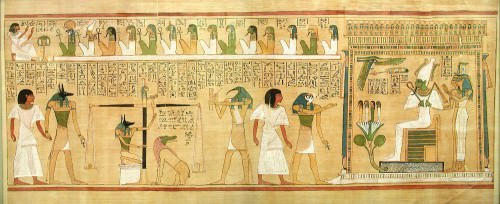
Book of the Dead
When one's time came, one would move forward to where Osiris, Anubis, and Thoth stood by the scales of justice and would recite the Negative Confessions, a ritual list of sins one could honestly say one had not committed. At this point one's heart was weighed in the balance against the white feather of truth; if one's heart was lighter than the feather, one was justified, and if not, the heart was dropped to the floor where it was eaten by the monster Amut and the soul would then cease to exist.
If one had been justified by the weighing of the heart, Osiris, Thoth, and Anubis would confer with the Forty-two Judges and then allow one to pass on toward paradise. This next part of the journey takes different forms depending on different texts and time periods. In some versions, the soul must still avoid pitfalls, demons, and dangers, and required the assistance of a guide book such as The Egyptian Book of the Dead. In other depictions, once one had been justified, one went to the shores of Lily Lake where a final test had to be passed.
The ferryman was an eternally unpleasant man named Hraf-hef to whom the soul needed to be kind and gracious. If one passed this final test, one was rowed across the lake to paradise in the Field of Reeds. Here the soul would find everything and everyone thought to be lost through death. Those who had passed on before would be waiting as well as one's favorite pets. The house the soul had loved while alive, the neighborhood, friends, all would be waiting and the soul would enjoy this life eternally without the threat of loss and in the company of the immortal gods. This final paradise, however, was only possible if the family on earth had performed the mortuary rituals completely and if they continued to honor and remember the departed soul.
See other Related Content for Ancient History ››
LICENSE
Article based on information obtained from these sources:with permission from the Website Ancient History Encyclopedia
Content is available under License Creative Commons: Attribution-NonCommercial-ShareAlike 3.0 Unported. CC-BY-NC-SA License